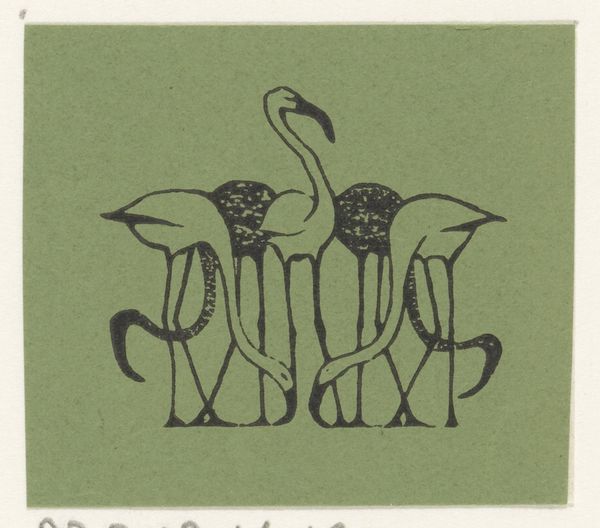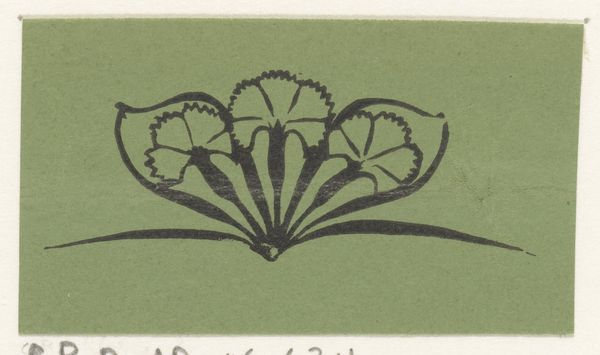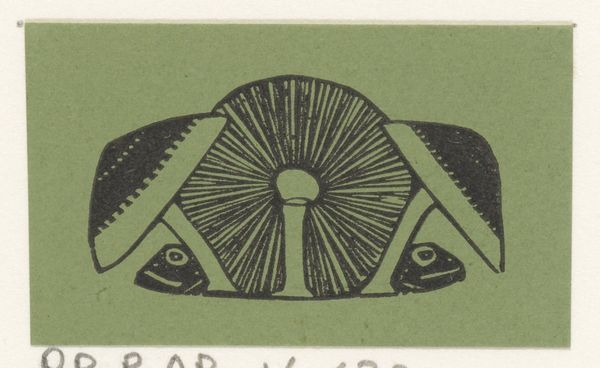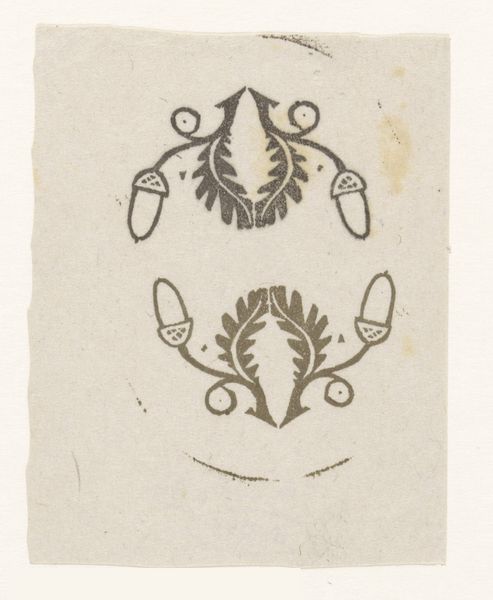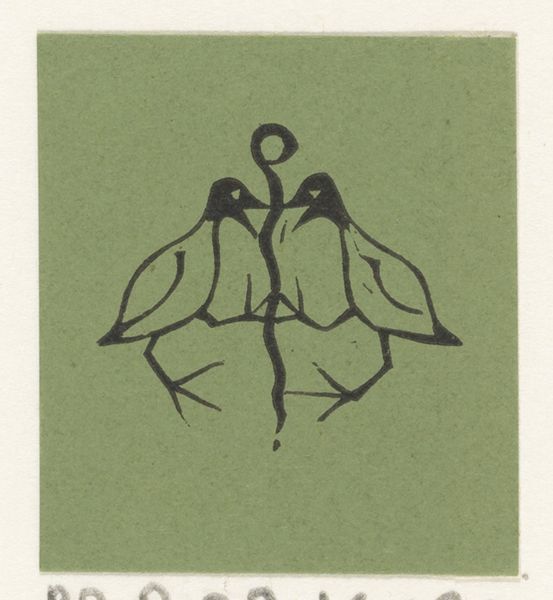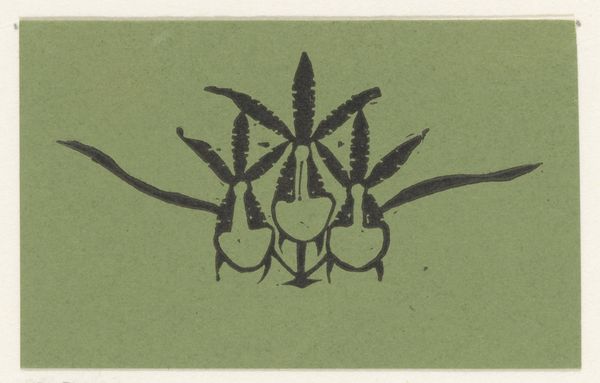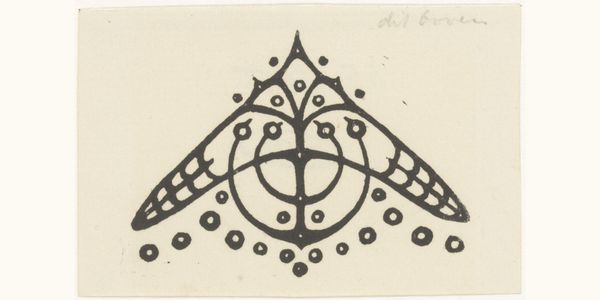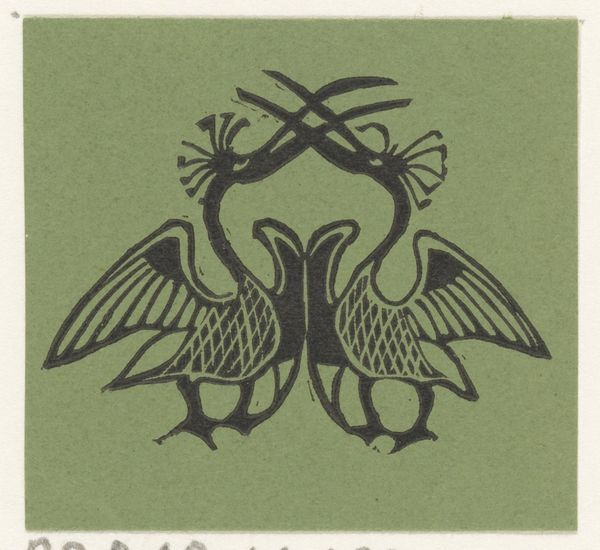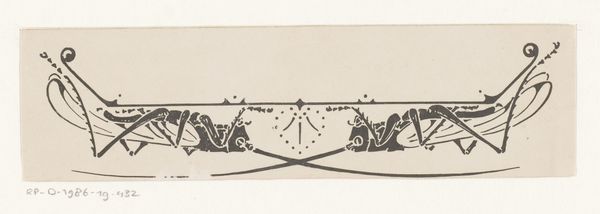
drawing, paper, ink
#
drawing
#
art-nouveau
#
figuration
#
paper
#
form
#
ink
#
geometric
#
line
Dimensions: height 36 mm, width 58 mm
Copyright: Rijks Museum: Open Domain
Editor: So, this is *Vignet met twee slakken*, or "Vignette with two snails," made by Gerrit Willem Dijsselhof in 1892. It's an ink drawing on paper and it's got this kind of serene, almost symmetrical quality to it. What's your take on it? Curator: It's interesting how Dijsselhof, deeply involved in the Art Nouveau movement, uses these snails. We see nature elevated to ornamentation. Consider how the Rijksmuseum, where this drawing resides, presents it. Is it displayed as a scientific illustration, or as a design object, emphasizing the snail's form and the abstract quality of line and shape that it lends to a larger composition? Editor: I see what you mean. I guess I assumed it was just about the aesthetic appeal. Curator: And there's the critical tension. It IS visually appealing. But why snails? Think about the social context of the time. Art Nouveau rebelled against industrialization by celebrating craftsmanship and natural forms. These snails, rather than noble beasts, elevate the everyday and humble to an art form. Editor: So it’s less about what’s *in* the image and more about what the image *represents* culturally? Curator: Precisely. It reflects a desire to integrate art into everyday life. The museum, then and now, acts as a stage where these values are either reinforced or challenged through curation and interpretation. Editor: I never considered how much the act of displaying something can change its meaning! Curator: That’s the fascinating part of art history. We examine how institutions shape not just *what* art we see, but *how* we see it.
Comments
No comments
Be the first to comment and join the conversation on the ultimate creative platform.




